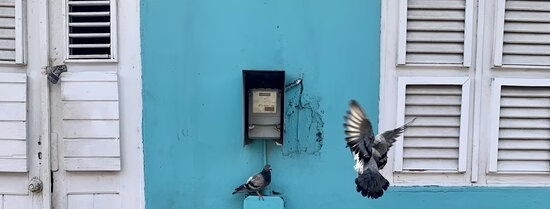The Urban Heritage focus interview series introduces four urban professionals and participants of the Urban Heritage Strategies course, which takes place yearly at IHS. The current edition is tailored to four World Heritage Cities, designated by UNESCO: Willemstad (Curaçao), Paramaribo (Suriname), Salvador da Bahia (Brazil) and Sawahlunto (Indonesia). The countries in which the cities are located have a partnership on heritage conservation with the Netherlands. In this series, we invited one representative of each World Heritage City to answer a few questions.
Stephanie van Heijningen comes from Curaçao. After obtaining her master’s degree in Arts, Culture & Society at Erasmus University, she moved back to the island where she currently works as a cultural researcher. In her own words, "the field of cultural research can be very broad, as can the possibilities of how your research findings can be put to use. This broad scope reflects itself in my professional interests, which range from critical heritage studies to sociology, psychology, and ethnography, to the arts and creative storytelling."
What determined you to attend this course?
When I saw this course online on Rijksdienst voor het Cultureel Erfgoed, there were many aspects that immediately drew me to it. My passion for cultural heritage in general, and my love for Willemstad in particular, were the initial drivers behind attending the theoretical part of this course. But it was especially the link between theory and practice - the applicable skills and tools, as well as the professional network this course would help me develop - that convinced me that this course was something I avidly wanted to take up. Being able to attend this course while residing in my home country, was of course also a great plus!
Tell us more about your case study, the city you focused on and what you learned from it
For this course I focused on Willemstad, which was officially inscribed on UNESCO’s World Heritage List in 1997. There is a great deal to not only earning a World Heritage status, but also to maintaining one. This course has given me the essential insight into what it means to have this status (Outstanding Universal Value), as well as the different factors that could threaten it, and the different dimensions it touches (social, economic, environmental). It was both interesting and challenging to experience and figure out how all these aspects are intricately interweaved when focusing on urban developments in Willemstad, while simultaneously trying to ensure the protection of its World Heritage status.
Working with course members who were each specialized and experienced in their own field of work, was also a very educational and eye-opening experience in itself. As was attending this course along with course members from other World Heritage Cities, who were often confronted with similar challenges that Willemstad is facing.
Photos by courtesy of Corry van Heijningen/Stephanie van Heijningen.
How does what you learned in this course relate to your own work or to your professional interests?
What I learned in this course provoked me to direct my research focus towards Willemstad and its social and cultural aspects. When working on the assignments for this course, it was an unfortunate discovery that there was not much recent data available that was specifically derived from Willemstad. As a side effect, this course made me realize how important it is to have access to such data. The course also emphasized the importance of a multi-
/interdisciplinary approach when it comes to urban planning and addressed the relevance of integrating social and cultural dimensions, as these can greatly contribute to the vitality of the inner city. For post-colonial cities, where multi-cultural communities have organically formed alongside each other and where possible tensions of a complex history still play a part in daily life, these dimensions are especially interesting to research further.
What takeaways from this course would you use as inspiration further?
Having a more profound understanding of Willemstad, and the way the city is governed, managed, and organized, helped me formulate relevant questions on for example, how to increase the vitality of the city, how to conserve urban heritage, how to raise awareness and appreciation, and so on. For me, personally, the leading question was what the city can do for the people and what the people can do for the city. This implies a balance between the private, public, and civic sector, each of which can contribute uniquely to the vitality of Willemstad and each of which can benefit uniquely from the proper education on the profound beauty and undeniable value of our World Heritage City.

